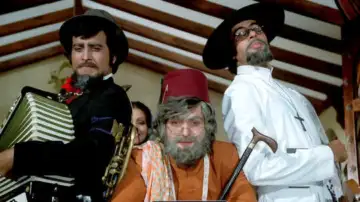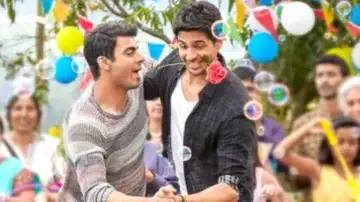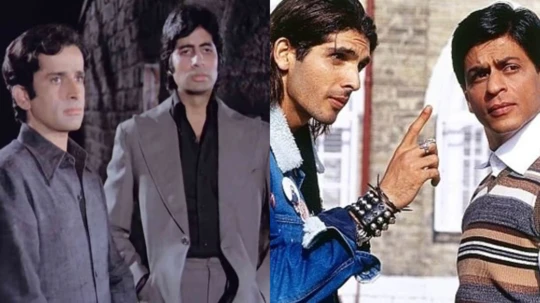Bollywood loves emotions. While films and their plots keep changing with respect to the changing times, the part of Hindi cinema that shows tender bonds remains untouched.
One trope that has endured across generations is that of estranged siblings. Rooted in themes of fate, identity, morality, and reconciliation, this narrative device has offered filmmakers a potent way to explore both familial bonds and personal transformation.
Whether it’s long-lost brothers reuniting in a crowded marketplace or siblings emotionally divided by trauma or rivalry, estrangement has served as both a dramatic turning point and a mirror to societal changes. Here’s a deeper look at how Bollywood has used, and evolved, this storytelling staple.
Golden age of lost and found
During the 1970s and 1980s, Hindi cinema made estranged siblings a cornerstone of the masala film format. Films like Yaadon Ki Baaraat (1973), Amar Akbar Anthony (1977), and Ram Lakhan (1989) cemented the ‘lost and found’ formula. In these stories, siblings are often separated during childhood, typically due to poverty, crime, or tragedy, and grow up unaware of each other’s existence.

Recognition would come through a shared childhood song, a religious symbol, or a scar, triggering a dramatic reunion and a final act filled with redemption and justice. This period capitalised on high emotional stakes and the fantasy that broken families would ultimately come together. It was also a reflection of India’s post-Independence anxieties, where fate played a central role and family unity symbolised hope and healing.
Moral divide: Brothers on opposite sides of the law
One of the most iconic explorations of sibling estrangement came in Deewaar (1975), where Amitabh Bachchan and Shashi Kapoor played brothers who grow up to become a smuggler and a police officer, respectively. The emotional tension between them was not rooted in ignorance of their bond, but in their conflicting paths.
This moral conflict, of one sibling choosing the straight road while the other drifts into illegality, became a recurring template. Films like Trishul, Parvarish, and more recently Raakh (2023) have continued to mine this theme. The emotional core here lies in the tragedy of watching shared childhood turn into opposing worldviews. It allows the narrative to ask difficult questions: Does loyalty to family override loyalty to justice? Can blood overcome ideology?
Emotional estrangement in modern cinema
In more contemporary films, the trope has shifted from physical separation to emotional distance. Siblings may live under the same roof, but years of miscommunication, comparison, or resentment keep them apart.
Kapoor & Sons (2016) is a prime example. The brothers, played by Fawad Khan and Sidharth Malhotra, are not lost in a literal sense, but carry unspoken grievances and hidden truths. Similarly, in Dil Dhadakne Do, sibling tension arises from generational pressure and suppressed emotion, rather than external conflict.

This evolution mirrors changing family dynamics in urban India. As traditional values clash with individual aspirations, emotional estrangement has replaced physical separation as the dominant expression of sibling tension on screen.
The secret sibling reveal
Another recurring theme in Bollywood is the hidden sibling, an unknown brother or sister whose sudden revelation changes the protagonist’s journey. Films like Main Hoon Na and Prem Ratan Dhan Payo use this device to inject surprise, drama, and emotional growth. These twists are often employed to prompt empathy or deepen character arcs, as protagonists come to terms with complex family legacies.
Rare but evolving theme – sister rivalries
Bollywood’s treatment of sibling estrangement has long been dominated by male characters. However, a handful of recent films have shifted the lens to sisters. Pataakha (2018) told the story of two sisters locked in a lifelong battle of affection and animosity. Qala (2022) explored the psychological toll of maternal bias and sibling rivalry in a more intimate, melancholic tone.
These films mark a welcome shift from the male-centric tradition, offering complex portraits of how sisters navigate familial love, jealousy, and social expectation.
Why the sibling trope endures
Estranged sibling narratives continue to work because they tap into universally resonant emotions: loss, guilt, longing, and the hope of reconciliation. In a society that places high value on family, the idea of relationships breaking, and healing, carries both dramatic and emotional weight. Moreover, these stories offer a dynamic structure. Estrangement can be used in action films, romantic dramas, thrillers, or even indie narratives. It remains versatile, flexible, and emotionally potent.
As Rakshabandhan celebrates the bond between brothers and sisters, Bollywood’s long affair with the estranged sibling trope shows that in cinema, as in life, reconciliation, no matter how delayed, is always a possibility.
